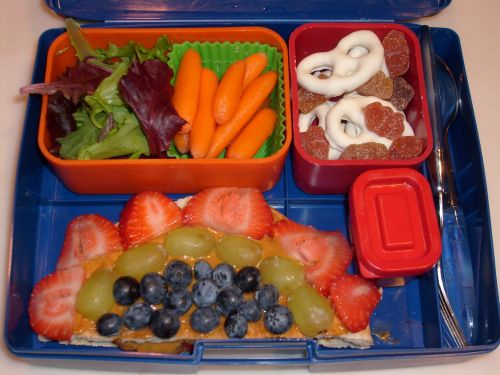 Ironic that fall hosts both National Childhood Obesity Month in September and National School Lunch Week in October. It was the sad state of school food that snared my attention nearly twenty years ago, eventually inspiring the launch of Recipe for Success.
Ironic that fall hosts both National Childhood Obesity Month in September and National School Lunch Week in October. It was the sad state of school food that snared my attention nearly twenty years ago, eventually inspiring the launch of Recipe for Success.
Our school hallways were filled with snack vending, and junk food concessions crowded the lunch line. These efforts to monetize poor eating choices among our youngest and most vulnerable were having a devastating effect. A deadly epidemic was spiraling out of control, (30% of American kids are obese.) Those in charge had perfectly plausible excuses: we are just giving the kids the food they prefer and therefore eat; the commissions and licensing fees are supporting our arts, our scoreboard, our music program; this is the best we can do on our limited budgets.
As many as 12 million American children eat their only meals of the day at school and 32 million eat school-provided lunch. For decades, the typical fare, bursting with sodium, fat and sugar, practically guaranteed poor health for the kids who depended on it. Something had to be done. Congress passed the Hunger-Free Kids Act in 2010 with bipartisan support with guidelines and incentives designed to deliver more fresh produce and whole grains, low fat dairy and portion control. "Oh, the sky is falling!" Reports on tossed food and student lunch line revolts flooded the airways. But according to a recent Robert Wood Johnson Foundation survey, 70% of the kids now report liking the new food. And districts that were enthusiastic early adapters have already begun to see impact on student waistlines.
In August, the Kellogg Foundation reported that two-thirds of Americans say the nutritional quality of food served in public school cafeterias is good--even excellent--up from 26 percent from 2010, before the new standards. And 93 percent of those surveyed believe that it is important to serve nutritious foods in schools to support children's health and capacity to learn.
You would think we might have rounded the corner on this issue. But there were and still remain lots of powerful companies with skin in the game. I have learned that when a great deal of money is involved, common sense rarely prevails. Some $52 billion a year is spent advertising junk food to kids--obviously a large target market, and school lunch contracts are very lucrative. Don't think these companies are going to take huge slashes in market share with a smile on their faces. No, they are now spending billions to
promote "free choice" and softening the standards--a lot of that money is being spent on
Capitol Hill.
The Healthy, Hunger-Free Kids Act of 2010 is due for reauthorization by September 30, 2015. As consumers and parents, we must hold the line and fight for what is best for our kids--healthier school lunches. Call your U.S. Representative today and insist that Congress stand up for our kids, not for deep-pocketed junk food makers.














Have a question?